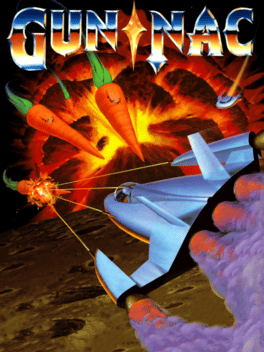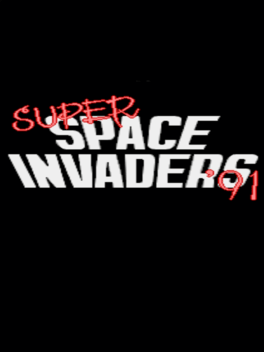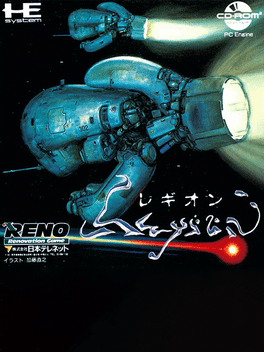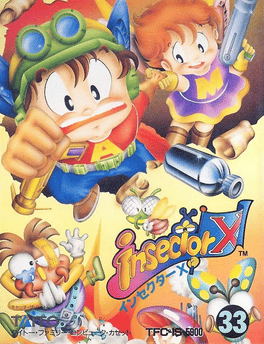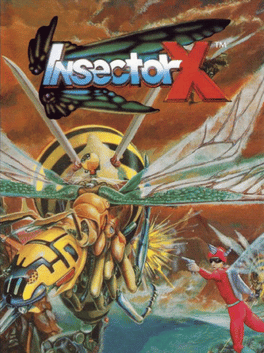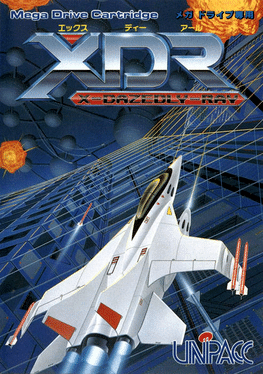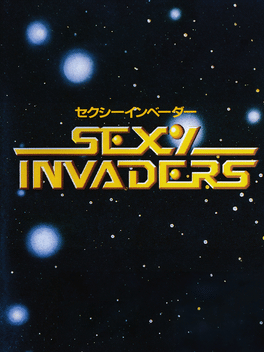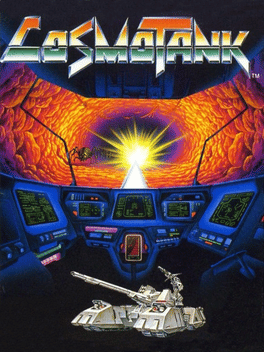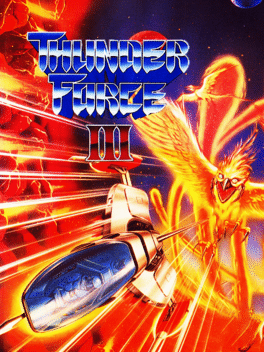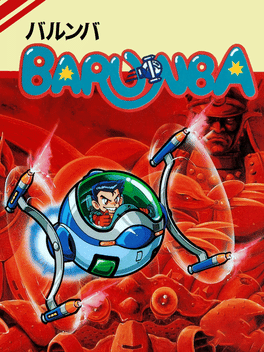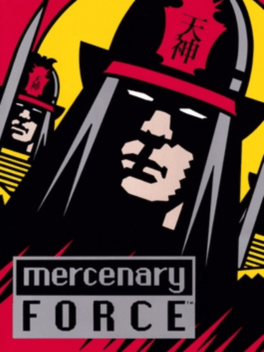New Wii Games - Page 428
-
Uchuu Keibitai SDF
1990
Uchuu Keibitai SDF
1990
A meteorite group floats in space, full of mystery. Near the sand filled planet, a battleship looms. Space colonies emerge in the moon light. In the endlessly wide universe, a large shooting game that unfolds . -
Gun Nac
1990
Gun Nac
1990
star 6.7The most happening place in the universe is the trendy, upscale solar system of IOTA Synthetica, part of the Galactic Federation of artificial stars. It's as far from dirty old Earth as can be... But don't sign up to go yet! A strange cosmic energy field with a major attitude has engulfed the system, and the most outrageous things are happening. Ordinary inanimate objects are coming to life - harmless little animals are becoming rabid giants - and the freaked-out residents are under attack! The only Galactic Commander who can handle this ordeal is the eccentric renegade called Gun-Nac. He can oust this aura that's threatening the destruction of comfortable artificial life as we know it. But where in the universe is he? He could be as far away as Earth, searching for a new Game Pak. Commander Gun-Nac, if you read this, call H.Q., A.S.A.P., O.K.? We N.E.E.D. you! -
Majestic Twelve: The Space Invaders Part IV
1990
Super Space Invaders '91 was produced by Taito in 1990. The gameplay adheres much to the original, making it very easy to play. The object in most cases is to simply clear the screen of invaders before they reach bottom. Every so often, however, a boss invader appears that must be hit multiple times to be destroyed. -
Legion
1990
Legion
1990
Legion is a side-scrolling shoot 'em upset in a futuristic world. Players control a fighter pilot tasked with defending a futuristic empire from waves of mechanical enemies. -
Insector X
1990
Insector X
1990
The player controls an insect-sized warrior named "Kai" who takes on a vast army of cyborg insects to free the insect world from the dark ruler queen. The game uses two buttons: one for an upgradable main shot, and another for a seemingly random selection of secondary weapons. -
Insector X
1990
Insector X
1990
Insector X is a horizontally scrolling shooter. The Genesis version has a number of differences: "realistic" sprite work (compared to the "cute" style of the original), brand new music, a reworking of the secondary weapon system, the removal of the autofire powerup, and new stage sections, among other things. Hot-B's original design for the game was better realized on the Genesis, as Taito requested a more comical style of game for the original release. -
XDR: X-Dazedly-Ray
1990
XDR: X-Dazedly-Ray
1990
XDR horizontal shoot 'em-up released exclusively in Japan. The game is notable for being one of the poorest received Mega Drive games ever released, and was frequently voted the system's worst Japanese-developed game by readers of Beep! MegaDrive magazine. -
Xevious: Fardraut Densetsu
1990
Improved port of the Arcade shoot 'em up with both air and surface attacks. -
Sexy Invaders
1990
Sexy Invaders
1990
An adult version of the classic arcade game Space Invaders which upon beating levels you get to see various girls undress. -
The Punisher
1990
The Punisher
1990
Shooter game similar to Operation Wolf, based on Marvel comic hero, The Punisher. Each level consists of a series of single screens in which The Punisher needs to kill all enemies. Shooting an innocent results in instant game over. -
Volleyfire
1990
Volleyfire
1990
Players must shoot down opponents by precisely timing each shot so that it avoids rocks and other debris. -
Down Load
1990
Down Load
1990
Horizontal shoot 'em up for the PC Engine. The player, as cyber-diver Syd, must fly his hoverbike through the future city of Kabukicho to rescue his partner Deva from the corrupt police. Download is a horizontal shoot 'em up set in a dystopian cyberpunk future in which the main character, Syd, is haunted by memories of his friend Ohala falling to a cybernetic menace. Meanwhile, he receives a call from his contact/partner Deva and must rush to her rescue when she is abducted by the Kabukicho police force. The game's story is depicted in a series of animated vignettes before each stage, similar to Ninja Gaiden. Beginning with the mean streets of Kabukicho, Syd will eventually jack into the internet and fights in a similar manner through cyberspace. -
Zoids Densetsu
1990
Zoids Densetsu
1990
Zoids Densetsu is an Action game, developed by Nova Games Ltd. and published by Tomy Corporation, which was released in Japan in 1990. -
Cosmo Tank
1990
Cosmo Tank
1990
star 6The player controls an armoured fighting vehicle from either a first-person perspective or a third-person perspective; depending on the level design. All games begin on a planet's surface with an overhead view. When the player enters a tunnel, the view switches to first-person. After destroying the Life Core inside a tunnel, the player travels to a new planet through a vertically scrolling stage. Cosmo Tank has three modes. In quest mode, the object of the game is to destroy Alien Life Cores on five planets to free them from Master Insect. Players can earn experience levels in the quest mode by defeating enemies. The maximum amount of experience points that a player can earn is 999; which allows players to reach the level cap of 6. In training mode, the player practices in a closed area and is given a ranking. In vs. mode, the Game Link Cable is used to allow two players to race to defeat the alien leader. After either beating the game or acquiring a game over, the player is given a rank that shows how far he mad -
Thunder Force III
1990
Thunder Force III
1990
star 7.2Thunder Force III is a scrolling shooter game developed by Technosoft. It is the third chapter in the Thunder Force series. It was released in 1990 in Japan, Europe and the United States for the Sega Genesis. During the same year, it was retooled into an arcade game named Thunder Force AC. In 1991, Thunder Force AC was ported to the Super Nintendo Entertainment System under the title Thunder Spirits. -
Darwin 4081
1990
Darwin 4081
1990
Darwin 4078 (ダーウィン4078 dāwin yon zero nana hachi) is an arcade game released by Data East in 1986. The game is a vertical scrolling shoot 'em up like Xevious. -
Aerial Assault
1990
Aerial Assault
1990
A sidescrolling shooter in which you fight your way through 5 missions, each with a boss to defeat at the end. Along the way you find Power-Ups to help your odds either by improving your weapon or speed. Three difficulty levels are available (careful: "Easy" does not let you reach the very end) -
Barunba
1990
Barunba
1990
The Engine is hardly lacking in shooters, so to be successful, you have to stand out from the crowd. Barunba tries to add a hint of originality in its own subtle way. You control what is basically a floating globe (complete with little man inside) that has a weapons ring around it - this ring can be rotated right around the ship giving a fully controllable direction of fire, something obviously useful for those pesky critters approaching from behind. From the start, you are equipped with several different types of weapon, each of which can be temporarily boosted by collecting items that are dropped by exploding enemies. The levels are auto-scroll, moving around in all directions and contain mid-level as well as end-of-level bosses. Your ship has an energy bar, located at the bottom left of the screen, and once it is depleted it's 'Game Over'. -
Whip Rush
1990
Whip Rush
1990
Whip Rush is a side-scrolling space shooter released in 1990 for the Sega Mega Drive System and subsequently for its American counterpart, the Sega Genesis. Whip Rush's gameplay style is very similar to R-Type: The title ship flies through 7 dangerous stages and is forced to fight large bosses using timed attacks. The ship's Options are similar to the ones in Curse or Psychosis: The ship can be equipped with two Options at a time and the player can rotate them around the ship changing their directional fire at the same time. The player has a total of three weapons to choose from and can change the ship's speed through eight different speed levels. Extends are awarded and there are no checkpoints, but if a player loses all their lives and continues, they have to restart the level over again. -
Mercenary Force
1990
Mercenary Force
1990
star 6.8Over one hundred years ago during the mighty Shogun era, the Lord of Darkness sent his fearsome army to terrorize the Japanese countryside. Using the Dark Lord's powerful magic, his evil minions spread famine, plague, and pestilence wherever they went, leaving the peaceful population hopelessly oppressed. All who challenged the wicked Lord were mercilessly slain as a warning to all those who had any further thoughts of rebellion. Then one day while meditating, the great Shogun, Tokugawa, had a divine vision where he saw a small group of mighty warriors rise up to defeat the evil Lord. He immediately set out to recruit the five bravest and most skillful fighters in the land. After months of searching he was finally ready to put his dream into action. It was time to unleash the Mercenary Force.

